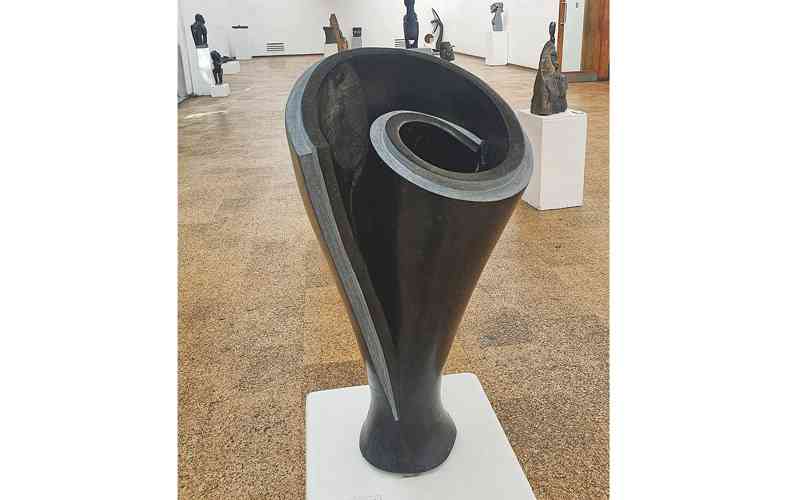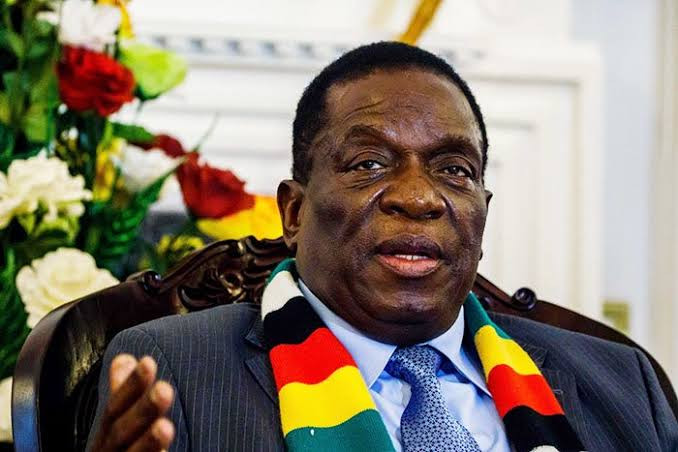
IN celebration of Tengenenge Arts Centre, the National Gallery of Zimbabwe (NGZ) is currently presenting an exhibition of stone sculptures from the world-renowned community.
The artworks show different approaches in technique and subject matter, ranging from the naive to ultra-modernist aesthetics, proving that the movement is alive and continues to evolve.
Situated 150km north of Harare on the outskirts of Guruve growth point, Tengenenge art community was born out of necessity when international sanctions crippled tobacco farming in colonial Rhodesia (modern-day Zimbabwe).
Former tobacco farmer, the late Tom Blomefield founded the sculpting community in 1966 after being influenced by the late Chrispine Chakanyuka, who was a sculptor and nephew to Joram Mariga, considered to be the “father of Shona sculpture”.
In the heat of Zimbabwe’s war of liberation, Blomefield sold the farm in 1973 and moved to Harare.
In 1985, five years after Zimbabwe’s independence, the Dutchman returned to Tengenenge and assumed directorship of the arts centre.
In the aftermath of farm invasions and a government-initiated land redistribution programme, the farm was again conveniently sold in 2007, this time to renowned sculptor Dominic Benhura.
In 2011, long past its golden era, Tengenenge was acquired by the NGZ largely to fulfil its mandate as a museum, and preserve what has become a historical treasure, and important artistic heritage.
- Daily life struggles reflected in Burning Figure
- Baker’s art work inspired by personal experiences
- NGZ to honour winning finalists
- Stage set for visual arts awards ceremony
Keep Reading
The success of the art community is ebbed in the fortunes of the country through economic challenges and political unrest.
Going by its history of rebirth and reinvention, the Tengenenge arts community can be expected to overcome current economic adversities just as it did during colonial times, and in post-independence Zimbabwe.
Running under the title Enhancing The Stone, the exhibition commemorates the role of Tengenenge Arts Centre and its legacy in the stone sculpture movement.
It is presented as a tribute to early members of the community both surviving and deceased, that include Bernard Matemera (1946-2003), Sylvester Mubayi, Fanizani Akuda (1932-2002), Henry Munyaradzi (1931-1998), Enos Gunja, Amali Malola (1914-2002), Sanwell Chirume, Edward Chiwawa, Barankinya Costa (1932-1998), and Makina Kameya (1920-1988).
According to NGZ executive director Raphael Chikukwa, the exhibition is specially dedicated to recently deceased sculptor from Tengenenge, Josia Manzi (1933-2022).
Curated by Fadzai Muchemwa and Zvikomborero Mandangu, the exhibition includes various styles that dominated different phases of the stone carving movement such as the earlier naïve style reflected by Kilala Malola’s Mother and Child, mythology and spiritualism showcased by Biriyo Ferenando’s anthropomorphic Figure, and a modernist outlook from Prosper Chiroodza’s Thinker, which looks like a Keith Haring drawing come to life.
Some pieces are purely abstract, such as Vengai Mupfudzi’s Shooting, and Percy Kuta’s Spiral, whose titles and appearance invoke objects used in real life without assuming the actual form.
Through the power of suggestion, the sculptors transcend literal representation of objects.
Zakeo Chanakiya’s ornamental Tortoise, is the one whose shell is removed to create a hollow space that may serve as an ashtray.
Purely decorative Kelvin Ferenando’s Shrub of three leaves emerging from a seemingly liquid rock belies a sophisticated world view in its semi abstraction.
It looks like a prehistoric plant fossilised in ancient lava. The repeated motif of a leaf, and the glossy surface are strongly evocative.
Shrub is in the same mould with Cloudious Muhomba’s Lizard Bowl, and Biggie Makaki’s Bowl that features a frog, both of which are designed as decorative mantel pieces.
Betias Chakawa’s Sisters features three female figures whose bond is metaphorically cast in stone.
In similar fashion, Clemence Makore’s Choir depicts nine singers with identical facial expressions, whose long-stretched necks look like pipes.
From the silent stone, their voices appear to rise in harmony.
Animals have always been a popular subject for sculptors. Jaisi Muhomba’s Chameleon, and Dancing Monkey, as well as Wilfred Tembo’s Baboon, and Juja Tembo’s Owl, bring the animal kingdom into the gallery to represent both nature and totem.
The human head, a classical subject in sculpture, is represented through various interpretations.
Simbio Bangura’s Round Head is a symbolic object that combines the moon and the sun.
Bangura’s piece shares similarities with Gift Seda’s Eclipse, which depicts a partially obscured figure of the moon.
Joseph Tsayayo’s Head is a grisly old man with a beaming smile and benign facial expression under a military cap, while Mangizo Mabvuto’s Untilled Head has attributes of a mask with its pointed animal ears, and shut eyes, resulting in a palpable moody inscrutable expression.
On the other hand, Ali Chitaro’s Head is a bluntly shaped orb of irregular symmetry and sullen expression that is indifferent to the fanfare it attracts.
Wasili Malola’s Head, a monumental piece carved out of a huge block, reveals a partially exposed female face with a contemplative expression.
Woman, the eternal muse for artists, is covered by Jeneti Manzi’s Woman depicting a female subject in a dignified position with hands on her lap and wearing horns that signal her authority.
Davison Chakawa’s Woman is a happily expectant figure with an over-the-shoulder smile and wide-eyed gaze.
Cosmas Chifamba’s unpolished piece titled Lady is of elegant symmetry and lines, depicting a woman with a beautifully detailed hairstyle in a contorted position that might be a yoga exercise or sign of anguish.
Love is in the air with Last Mahwahwa’s Lovers, two heads carved from a single block of stone to depict a dreadlocked man and a woman with a complementing Afrocentric hairstyle, in a passionate kiss.
Gift Bangura’s Couple is also carved out of a single block to reveal an embracing couple anxiously looking out to the audience in an unsettling manner.
Another work titled Lovers is David Mushonga’s intimately entangled couple with bulbous eyes and engorged features that seem to reflect the passion flowing through their ecstatic bodies and blissfully closed eyes that shut out the world.
Instead of pandering to the external gaze of foreign tourists and collectors, Muchemwa and Mandangu have created a show that focuses on the lived experiences of indigenous people.
The concept of the show easily accommodates remarks made by Pikirayi Deketeke, the chairperson of the acquisition committee for NGZ during a recent tour of Tengenenge.
“We can now be consumers, collectors, and promoters of our own art,” Deketeke noted.
Enhancing The Stone is an engaging exhibition that shows the power and conviction of Zimbabwe’s stone sculpture movement and revives expectations for Tengenenge to rise once more from the ashes of its former glory.






